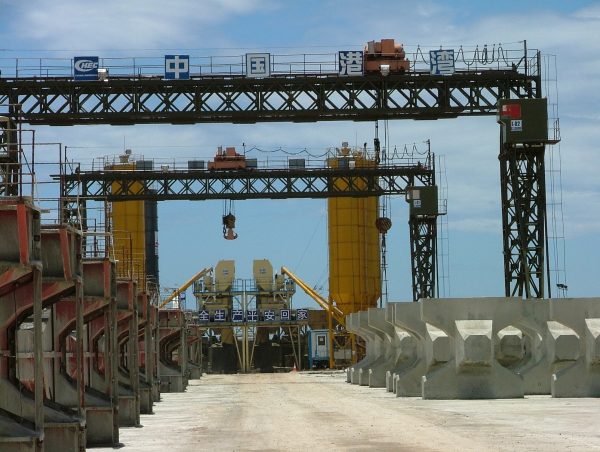Infra
Can Foreign Lenders Curb South Asia’s Infrastructure Corruption?
Published
2 months agoon
By
Admin
With rapid urbanization and growing populations, South Asia as a region faces an urgent need for infrastructure development. From transportation networks to energy grids, the demand for investment is immense. The World Bank estimates that between $1.7 trillion and $2.5 trillion is required by 2030 to address South Asia’s infrastructure financing needs. Yet, this ambitious target is overshadowed by the harsh reality of limited domestic resources, forcing nations to turn increasingly to foreign financing.
While external lenders provide a necessary boost for underfunded infrastructure projects, these loans come with significant risks. In many developing countries across the region, debt distress is becoming the norm rather than the exception, and the persistent menace of corruption continues to inflate costs, distort incentives, and erode public trust in government institutions. Therefore, the infrastructure dilemma of developing countries like Sri Lanka is not just about financing but about governance.
Based on the findings of a study conducted by Verité Research, a Colombo-based think tank, this article recommends steps foreign lenders can take to help address governance vulnerabilities in projects they fund.
Corruption: The Hidden Cost of Infrastructure Investment
The cost of corruption in infrastructure projects is often substantial but difficult to quantify, given its pervasive and hidden nature. However, studies have indicated that developing countries lose an estimated 10-25 percent of the value of public contracts to corrupt practices, including bribes, kickbacks, and misallocation of funds. These losses, often absorbed in inflated project costs, severely diminish the effectiveness of foreign loans and undermine the intended benefits of infrastructure development.
In South Asia, the problem is even more pronounced. Seven of the region’s eight countries rank among the lowest on Transparency International’s Corruption Perceptions Index. Large infrastructure projects are particularly vulnerable to corruption, as they involve layers of contractors, complex procurement processes, and, often, little public oversight.
In the case of Sri Lanka, over the past two decades, the country has borrowed heavily to finance large-scale infrastructure projects. Between 2005 and 2020, an estimated 81 percent of all external loans were directed to financing government infrastructure initiatives. However, corruption and mismanagement have left a legacy of underperforming or overpriced projects that have not delivered their promised economic returns.
The island nation’s economic crisis in 2023 illuminated the pitfalls of this unaccountable borrowing spree. Sri Lanka was forced to approach the International Monetary Fund (IMF) for its 17th bailout, with the crisis exposing how a combination of unsustainable debt and corruption contributed to the country’s economic downfall.
For Sri Lanka, infrastructure financing became a double-edged sword: while foreign loans kept critical projects alive, the associated corruption-inflated costs, derailed timelines, and left the nation burdened by crippling debt.
The Role of Foreign Lenders: More Than Just Money
Foreign lenders, including multilateral institutions like the World Bank, the Asian Development Bank (ADB), and the Asian Infrastructure Investment Bank (AIIB), as well as bilateral lenders such as Japan, China and India, have become integral players in South Asia’s infrastructure development story. But their influence extends beyond just providing capital. These institutions have the potential – and the leverage – to set governance standards that can mitigate the risks associated with corruption.
Traditionally, lenders have focused on ensuring that projects meet environmental and social safeguards, which have become standard clauses in most loan agreements. For example, the projects are expected to comply with domestic environmental laws. However, the domestic laws relating to transparency and information disclosure have not received the same level of prominence despite their being equally valuable. Given corruption’s significant role in inflating costs and reducing the impact of infrastructure investment, foreign lenders have a vested interest in linking project financing to stricter compliance with transparency laws.
A study conducted by Verité Research serves as an instructive case study of how foreign lenders could promote transparency in Sri Lanka. In 2016, the country enacted the Right to Information (RTI) Act, a landmark piece of legislation aimed at improving transparency in government operations. Section 9 of the RTI Act mandates proactive disclosure of information related to large-scale public projects, including those financed with foreign loans. The law requires the respective government agencies that implement the project to publish detailed information about project objectives, costs, procurement processes, and contracts three months before project commencement.
Verité Research’s information disclosure assessment published on an online platform called Infrastructure Watch found that compliance levels are patchy. The platform assessed 50 large-scale projects in 2024, with a combined value of 1 trillion Sri Lankan rupees ($3.4 billion). Out of these 50 projects, 29 projects were financed by foreign loans and grants, which amounted to 76 percent of the total value of projects.
The findings were troubling: the government disclosed only 40 percent of the required information for these foreign financed projects, and data on procurement – the area most susceptible to corruption – was disclosed at an alarmingly low rate of 20 percent. This lack of transparency in critical areas remains a serious impediment to governance reforms.
This is where foreign lenders can make a meaningful difference. By linking their financing/loans to compliance with transparency laws such as Sri Lanka’s RTI Act, similar to the current practice pursued on environmental laws, lenders could help improve transparency and reduce opportunities for corrupt practices.
The Economic Case for Transparency
The benefits of greater transparency are clear for both borrowing countries and foreign lenders. For borrowing countries, improved transparency reduces corruption, leading to lower project costs and better value for money. Transparent procurement processes also facilitate fair competition, attracting higher-quality contractors and fostering long-term economic growth. Furthermore, as governments struggle with debt sustainability, reducing waste in public spending becomes even more critical.
For foreign lenders, transparency offers multiple advantages. First, it protects their reputations by reducing the risk of being implicated in corruption scandals. Second, it minimizes the risk of default by ensuring that projects are completed on time and within budget, making loan repayments more sustainable for the borrowing government. Third, it enhances diplomatic and economic relations between the lending and borrowing countries by fostering public trust and confidence in the funded projects.
The case for transparency is perhaps most compelling in countries like Sri Lanka, where debt burdens are already unsustainable, and where infrastructure investments have yet to yield the promised returns. By linking financing to transparency requirements, foreign lenders could help developing nations like Sri Lanka avoid the economic pitfalls of corruption and ensure that public funds are used more efficiently.
In the long run, the contribution of foreign-financed infrastructure projects to the economic growth of developing countries depends not just on the availability of foreign capital but also on how that capital is deployed. Without addressing the deep-rooted corruption problems in developing countries, the benefits of foreign financing will continue to be squandered. Foreign lenders have the tools to drive change. The question is whether they will use them.

2024 year in sports winners and losers: Caitlin Clark, Paris Olympics, Aaron Rodgers

Oil & gas industry sees non-US hiring rising amid overall jobs decline, says GlobalData – Offshore Technology

Forget something? These stores are staying open for last-minute holiday shopping

Meet Des Moines Register staff: Columnist Travis Hines covers all things Iowa State sports

The World’s Largest Stegosaurus Comes to New York City

The hidden climate cost of online shopping » Yale Climate Connections
Should Walmart get into sports? Here’s why it may make sense.

Top 5 business stories of 2024: Uber drivers made strides, and more

Duluth Prison Camp workers seek allies in push to save jobs, facility

